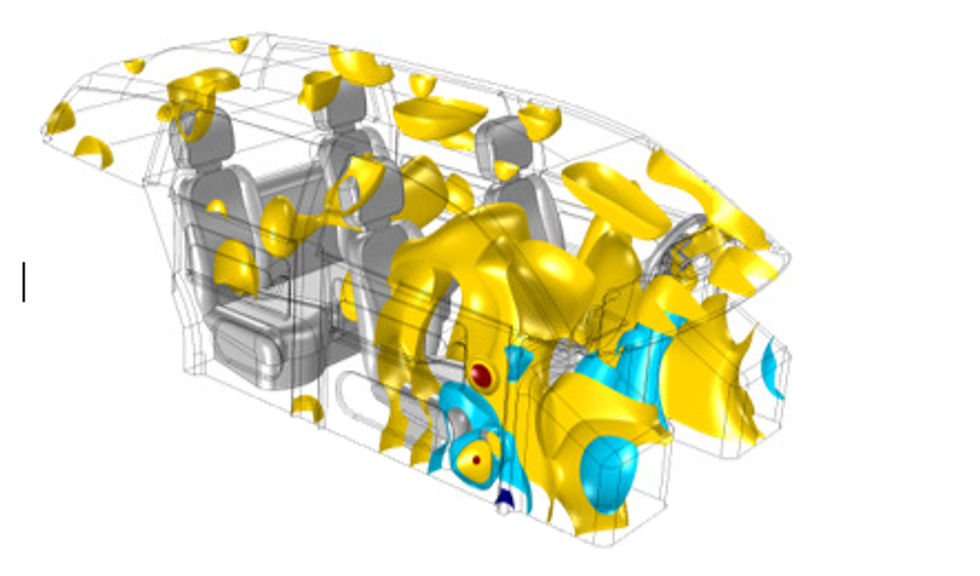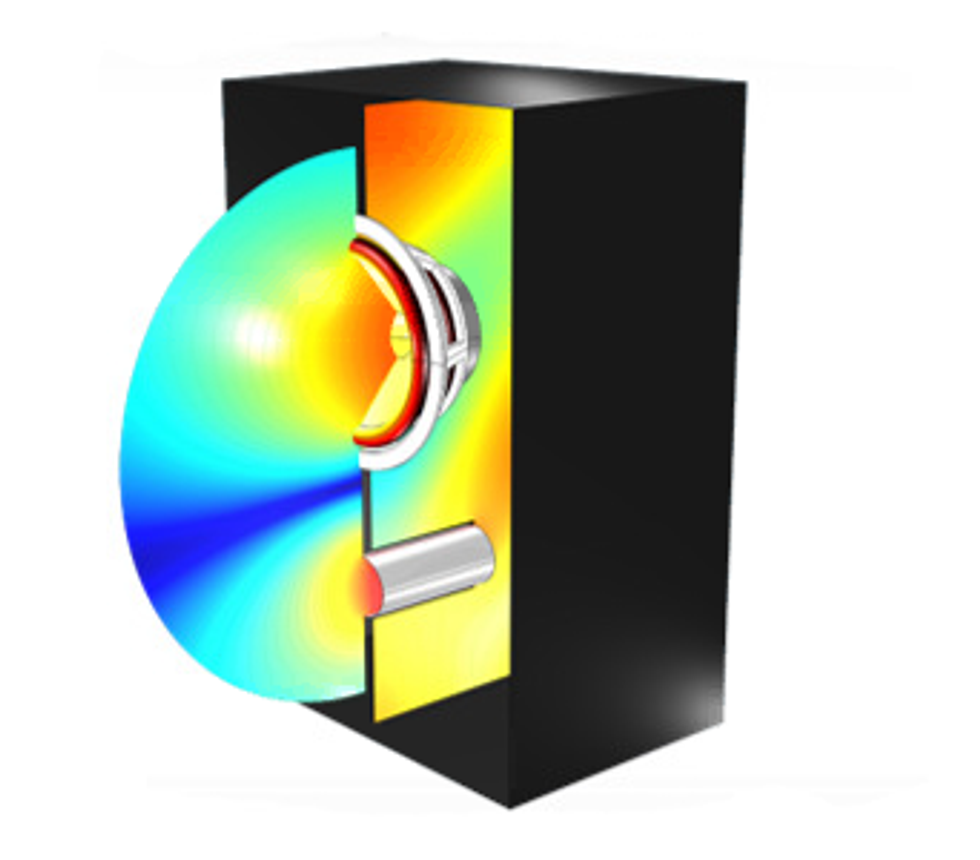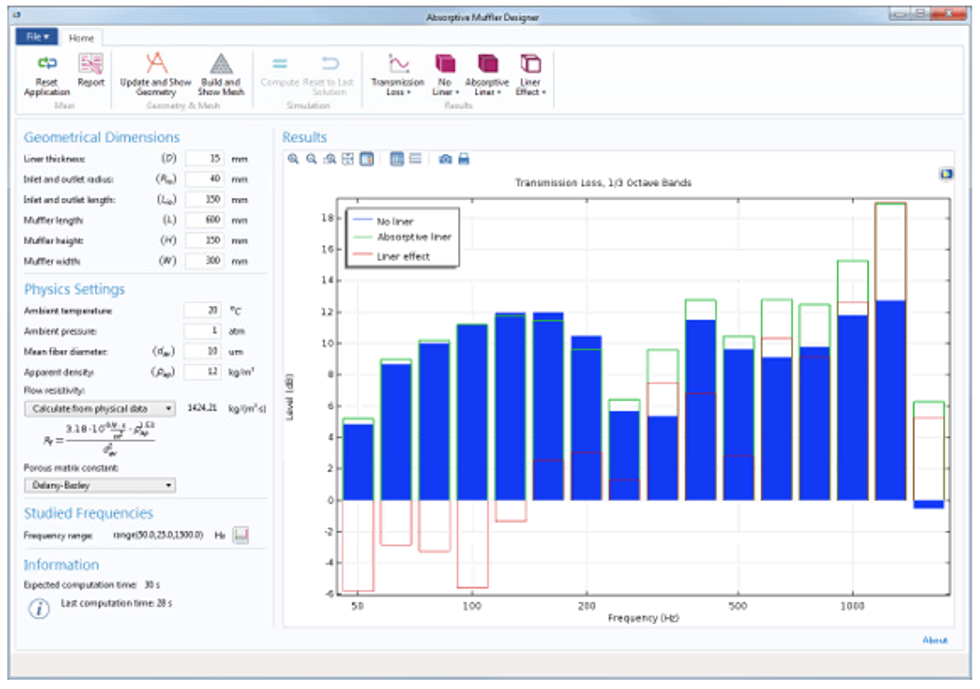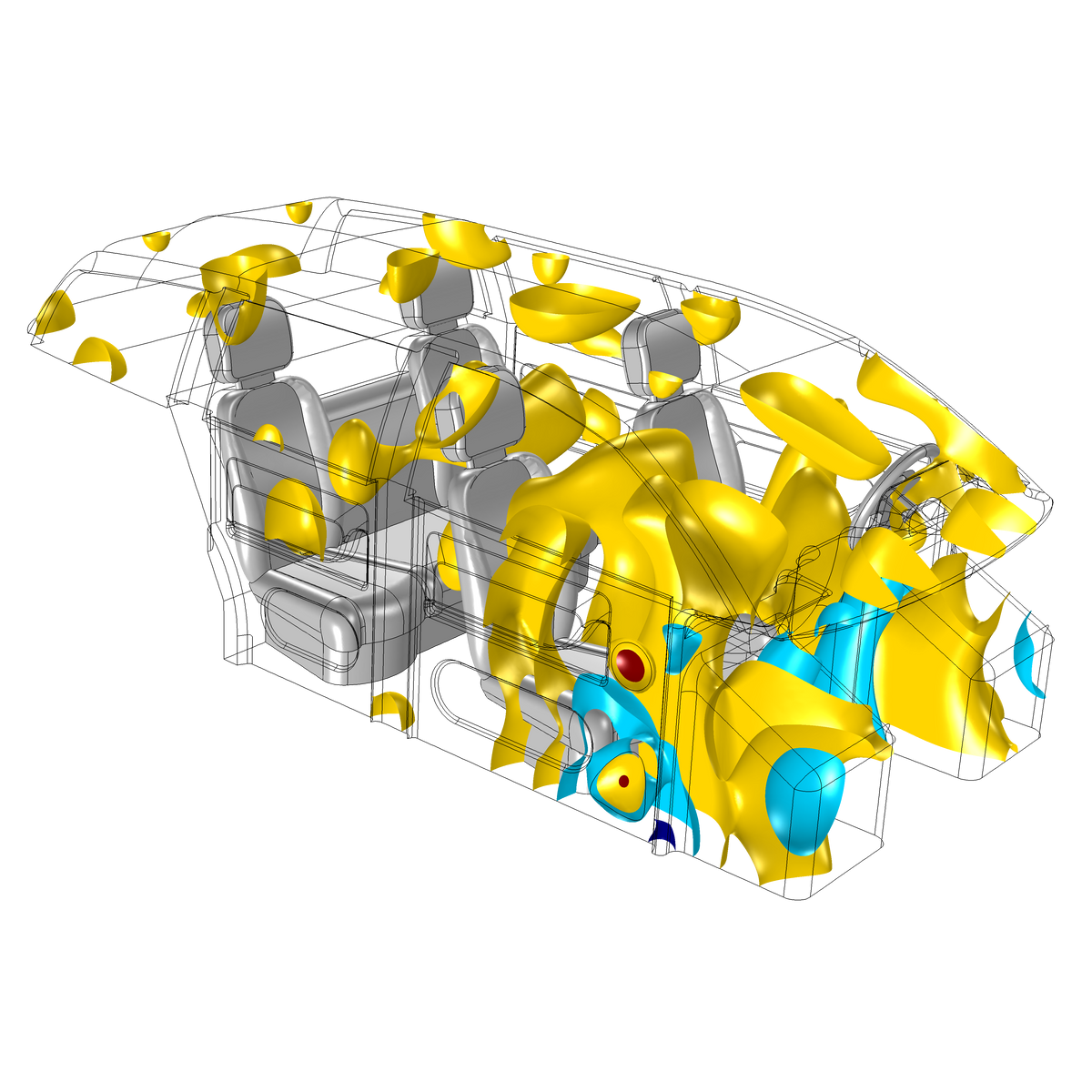The following is an excerpt from COMSOL News 2017 Acoustics Edition.
By Mads J. Herring Jensen
To accurately model an acoustical system, engineers often must account for multiple physics as well as their couplings at different scales and frequencies.
With increasingly complex systems and tighter project deadlines, acoustical engineers are turning to numerical simulation software to get the job done. By using computational tools, design tasks can be accelerated and the need for costly and time-consuming physical prototypes can be reduced. Acoustics simulation also increases the understanding of a design, leading to better informed decisions and higher-quality products.
To reap the benefits, what capabilities are important in acoustics simulation? Applications often include the reproduction, propagation, and reception of sound signals under diverse conditions. This includes not only the interaction of the sound signal with structures, porous materials, and flow, but also modeling the transducers involved in the generation and detection of the sound signals. All these are multiphysics problems by nature that acousticians have to consider for the efficient development of new products and technologies. This places a critical requirement on the modeling software in terms of the ability to couple physics effects relevant to the full system.
Current Technological Challenges In Acoustics
Sound quality is a trending topic in many industries. This concerns the reproduction of sound inside, for example, car cabins (Figure 1) or the output from the exhaust and muffler systems. Other examples include the performance and optimization of headphones and loudspeakers or the speaker system of mobile devices. In all of these cases, a detailed understanding of both sound propagation and transducer behavior is necessary to optimize the systems. Clever digital signal processing is not enough anymore to make systems behave and “sound good.” For example, to improve the performance of hearing aids using adaptive feedback canceling, a coupling of a miniature loudspeaker vibroacoustics model with an acoustic and solid mechanics finite element (FE) model is needed for producing accurate simulation results.
In the loudspeaker industry, a standard driver design has reached the limit of where improvements can be done by simple trial-and-error testing (Figure 2). Optimization requires detailed numerical analysis. Miniature loudspeaker systems are now driven at such high sound pressure levels that distortion and attenuation due to nonlinearities are introduced. The same nonlinearities also play a significant role in liners in aerospace applications.
Another example involving a multiphysics coupling — electrostatics, structural membranes, and thermoviscous acoustics — is the modeling of condenser microphones. The physics are tightly coupled and all necessary for a correct prediction of the microphone sensitivity.

COMSOL Multiphysics And The Acoustics Module
The Acoustics Module, an add-on product to COMSOL Multiphysics®, is ideally suited for modeling the many decades of frequencies involved in acoustics, ranging from infrasound to ultrasound, as well as the multiscale nature of acoustics when dealing with, among others, thermoviscous loss mechanisms or aeroacoustics. The acoustic simulation capabilities of the software include built-in easy-to-use multiphysics couplings between the different physics, which are set up seamlessly in the same modeling environment, while the Acoustics Module adds many specialized formulations of the governing equations of acoustics.

Acoustics Simulation Apps
To tackle the acoustic challenges faced by many in the industry, users without previous simulation software experience can run apps specifically tailored for them and their needs with predefined inputs and desired outputs. This is possible using apps created with the Application Builder available in COMSOL Multiphysics. Simulation apps are multiphysics models wrapped in a custom user interface. With this tool, specialists can package a complex simulation and allow users to change design parameters and analyze results autonomously with respect to industry standards and customer requirements.
Thanks to a local installation of COMSOL Server™, apps can be easily deployed to colleagues and customers throughout an organization and worldwide. Users can connect via the COMSOL Client or a major web browser. It has never been easier for simulation specialists to model acoustic devices with such high fidelity and let their colleagues benefit from their work.

To read more about multiphysics simulation in acoustics applications, click here.



